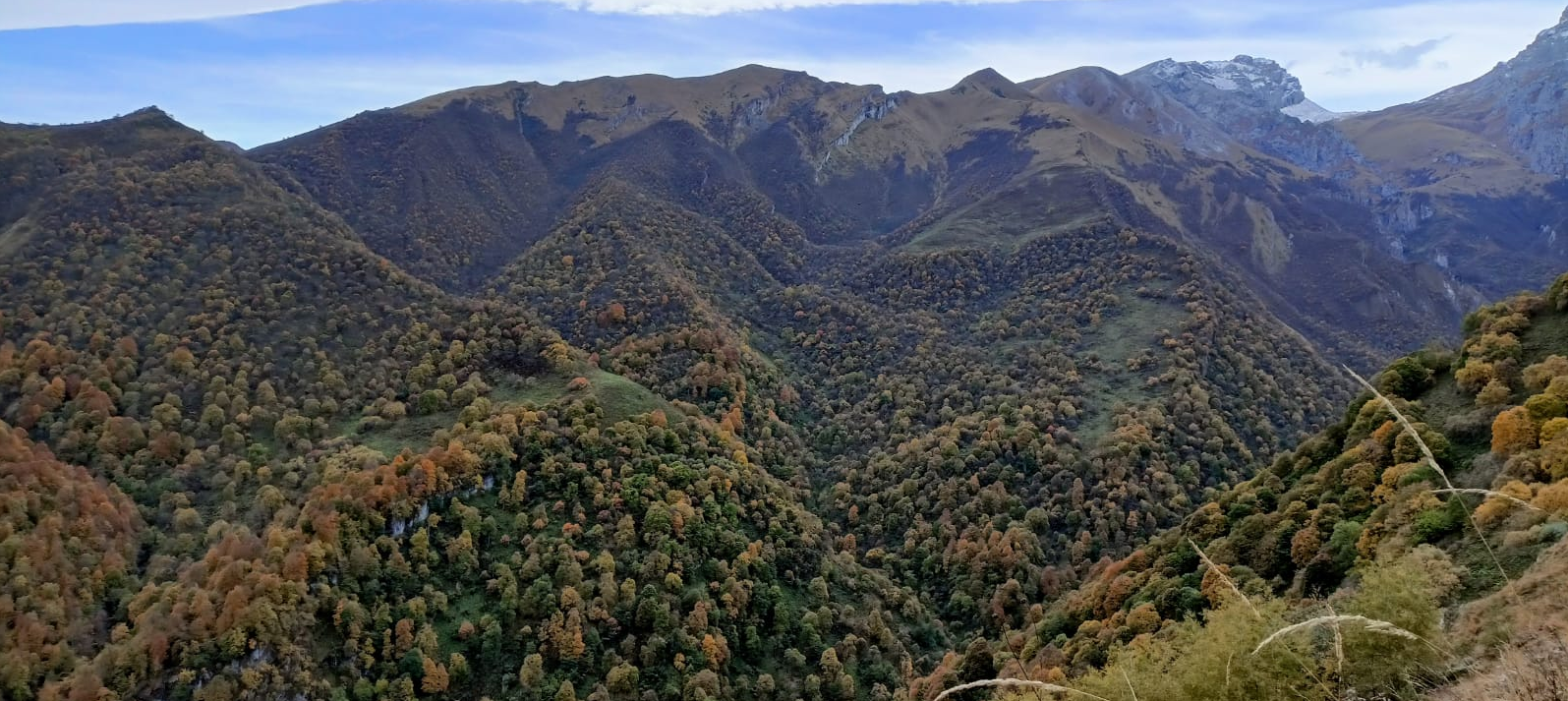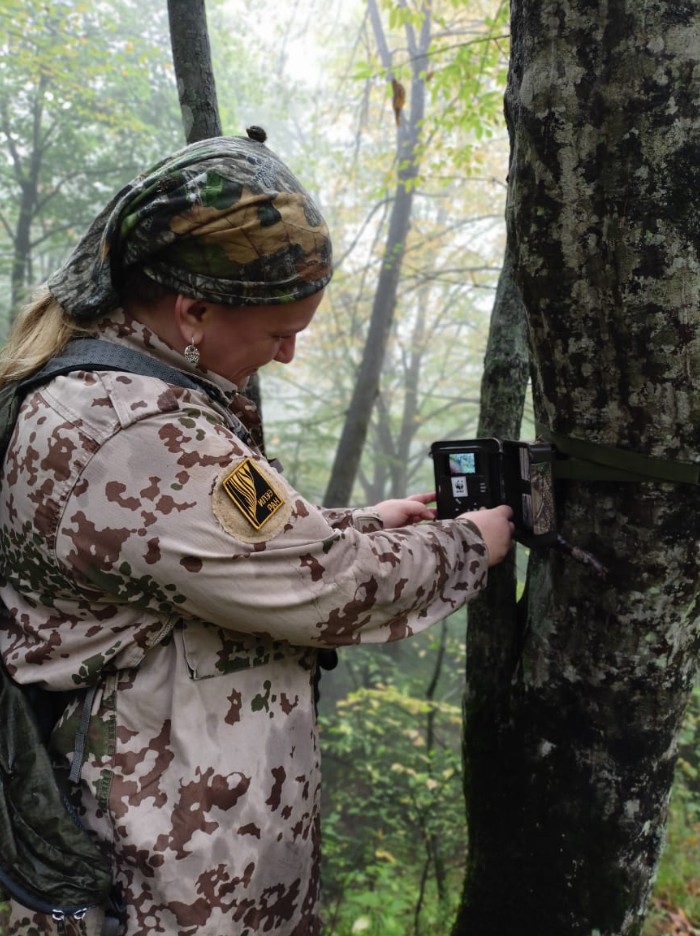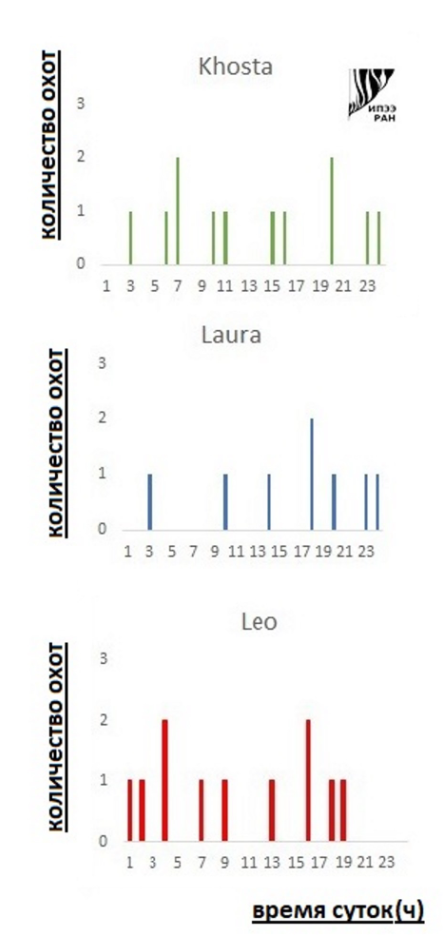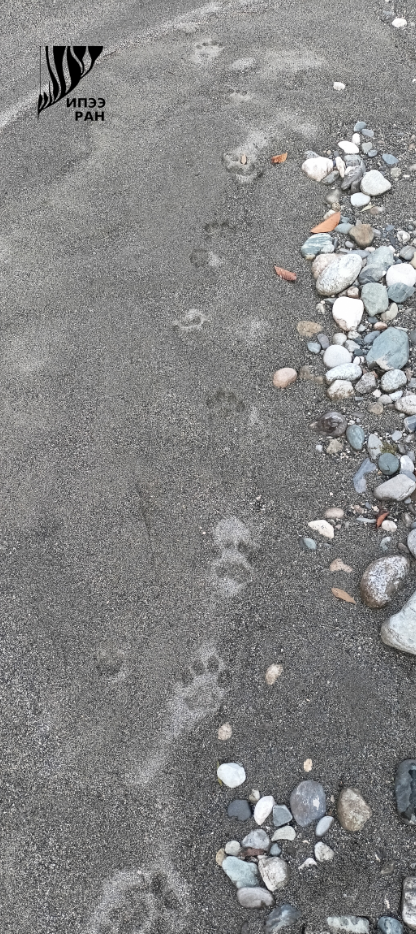
A little more than three months have passed since the release of three leopards into the nature of Ossetia. The scientific group continues to continuously monitor released leopards in the Republic of North Ossetia-Alania. As information about leopards accumulates, the work of the field team becomes more complicated. What can we say today about the behavior of these animals in nature? First of all, it should be noted that all animals are alive and have almost completely mastered the space of the Turmon forest. They hunt regularly and do not starve, now for all predators there is a very important period of change of seasons - the autumn, fattening period. In animals, there is a change of fur from summer to a more fuzzy winter one, there is an intensive weight gain, an increase in body fat. It is thanks to a successful fattening period that predators safely survive in cold winters, their body does not require an increase in the frequency of hunting in winter, and therefore animals can afford a more energy-saving mode of life during a difficult cold and often snowy period of time.

To date, Laura has mastered a region of 262 sq. km, Khosta has developed a region of 1293 sq. km, Leo mastered a region of 326 sq. km. The hunting preferences and geomorphological preferences of leopards when using space can be noted from the date as well Laura prefers the most inaccessible places in the Turmon forest - gorges, cliffs, rocky areas, stepped walls, and sets the most difficult tasks for researchers in the field. Laura perfectly mastered the possibility of hunting wild ungulates (roe deer) in the conditions of summer forest thickets, however, she does not exhaust herself with difficult hunts and alternates the prey of roe deer with the prey of medium-sized prey (badgers, raccoon dogs). Khosta prefers places with simpler terrain both for hunting and for moving, however, she is not afraid to cross serious rivers and even dared to safely cross the track. In hunting, she does not like to take risks and prefers small types of prey that are easy to catch: badgers, raccoon dogs, jackals, etc. Leo is the most economical in spending his strength, does not abuse hiking in the mountains, prefers glades, copses and edges. The variety of species of animals preyed upon has not increased since our last report, only their numbers: each leopard has caught at least 15 prey to date.

Since the release, Khosta has traveled the longest distance - 503 km, Laura has traveled less - 397 km, but on more difficult terrain, Leo has traveled 377 km.
For all three months after the release, despite the fact that all three leopards stayed within the same forest area - Turmonsky, they never encountered each other. However, they certainly communicate indirectly, for example, Khosta repeatedly checked out Leo's hunting grounds. Also, cats periodically check the places of their own hunts: perhaps this helps them tune in to the success of the next hunt.

We analyzed what time of day leopards prefer to hunt. Collar data showed that in late summer and early autumn, leopards predominantly hunt at dusk, although each leopard has an individual temporal pattern. Laura prefers to hunt during the evening twilight, while Leo prefers the night hours and morning twilight. Hosta hunts both in the evening and in the morning.
Since then, a scheduled inspection of camera traps has been carried out in the Turmonsky forest area regularly. Thanks to the camera traps installed before the release of the leopards, we were able to register the Khosta passage, which, of course, is an additional means of tracking the animals and allowing us to assess their condition by appearance. Ungulate species were also noted, which are the food base of the leopard in the forest zone of North Ossetia.

The program for the restoration of the Persian leopard in the Caucasus is being implemented by the Russian Ministry of Natural Resources with the participation of the Sochi National Park, the Caucasian Reserve, the North Ossetian Reserve, the Alania National Park, the World Fund for Nature, the A.N. Severtsov Institute of Ecology and Evolution of the Russian Academy of Sciences (IEE RAS), A.K. Tembotov Institute of Ecology of Mountainous Territories RAS, Moscow Zoo, with the assistance of the International Union for Conservation of Nature (IUCN) and the European Association of Zoos and Aquariums (EAZA). Funding for the monitoring of the Persian leopard in the Caucasus is backed by the supporters of the World Wide Fund for Nature. In North Ossetia, RusHydro is providing financial support for the population recovery program.
